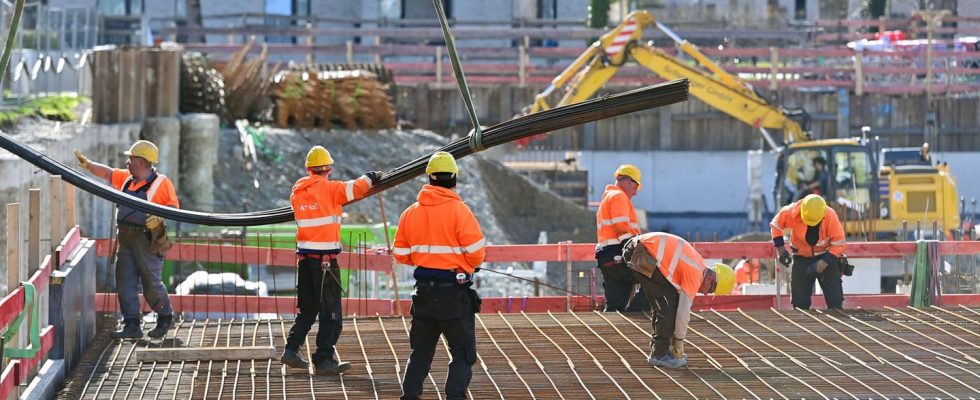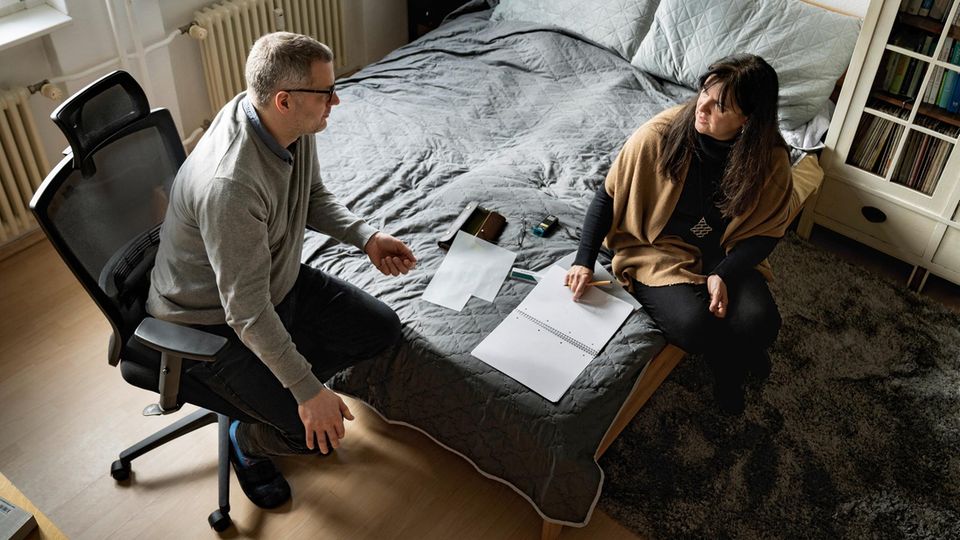The prospect of falling interest rates is improving the mood on the real estate market. If you want to buy a house or apartment, you shouldn’t wait any longer.
What is good for the real estate industry should currently be a wake-up call for those willing to buy: it is still clearly noticeable that the economy has deteriorated, including in construction. But the mood has now improved significantly in the first quarter of 2024 and many industry companies are now describing the business situation as significantly more positive than before. This was the result of the current sentiment survey by the economic research institute IW for the industry association ZIA. So there really are “first small upward trends,” say the study authors Michael Voigtländer and Ralph Henger.
Initial industry data had already indicated this at the end of the year. “It is still too early to speak of a turnaround in the mood; expectations in particular are still too clouded for that,” say Henger and Voigtländer: “Nevertheless, the results show that the industry assumes that the worst phase of the recession is over. ” This means: the market will definitely pick up again and the next upswing is imminent. Probably also with the prices.
Hope for new real estate projects
The mood is now clearing up, particularly in the area of “project development” – i.e. the development of new construction projects. Here, companies assess both the current situation and the prospects significantly more positively than in the previous quarter. However, the business climate index in this area is still clearly in negative territory. And it will probably take quite a while until the project developers reach a level of normal zero again. However, the overall industry index has now risen above the zero line again: the location and real estate climate have recovered to an average level.
After all, the prospect of falling interest rates in the summer will allow the industry to breathe a sigh of relief again. Many developers of residential and commercial buildings have recently suffered badly from the high interest rates of around 4 percent. The project development industry experienced its worst business slump in around 20 years. Many had initially put their new building projects on hold. In addition, a number of project developers went bankrupt because they made losses on new construction projects due to increased construction costs and higher financing interest rates. Or because they stopped selling apartments due to the collapse in buyer demand – which meant they didn’t have the money to continue building.
Recently, residential construction in this country in particular had almost come to a standstill. But building interest rates have now fallen back to around 3.5 percent (for 15-year fixed interest rates and standard private real estate loans) and buyer demand is gradually returning to the market, report real estate platforms and nationwide brokers. For the first time, the project developers are also expecting an increasing number of pre-sales. This means that everyone who is now looking for a property will face more competition on the market again – including for new buildings.
Another twelve month dry spell
Accordingly, the mood in the residential real estate industry is now clearing up quite clearly: the index rose by almost 10 points in this segment. The outlook for the commercial sector has also improved, but remains quite subdued. The commercial real estate sector also increased. “However, it can be noted that a majority of companies still expect the business situation to deteriorate further in the next 12 months,” emphasize the study authors. It’s not for nothing that the current saying in the industry is: “Survive till 2025.” Only then should things start to improve significantly again.
For residential real estate, this means that the majority of those involved still expect prices to remain constant in the current year, namely 60 percent of them. Only just under a third assume that prices will continue to fall. While in the previous quarter it was exactly the opposite. In any case, rents will certainly increase, say around 86 percent of those involved in the industry. None of the residential real estate entrepreneurs surveyed expected rents to fall.
First of all, constant prices
There is no doubt that the need for living space is great, say the study authors. Larger than the current offering in metropolitan areas. While the demand for offices in the office market is falling due to the constantly high to increasing home office rates, private living space cannot be replaced. “Accordingly, it can be assumed that this segment can recover quickly from the crisis given a good interest rate environment,” say Henger and Voigtländer.
However, if the housing market stabilizes again, prices will begin to rise again quite quickly. Because the severe housing shortage continues, and because of the several years of planning ahead, it will be a while before new construction can actually pick up noticeably again.
But: uncertainty about interest rates
It is still unclear what impact the central banks’ new interest rate turnaround, which is expected in the summer, will have on real estate interest rates: a good quarter of market participants currently think that interest rates will fall and financing conditions will improve. But just as many even expect worse conditions. Recently, the yield curve actually rose slightly, from 3.5 percent to 3.67 percent.
Why? Because the market had already reacted euphorically at the end of the year when the first hopes of interest rate cuts arose. They were the reason why building interest rates fell from 4.5 to around 3.5. However, it is likely that the anticipation was somewhat exaggerated. Because the ECB’s upcoming interest rate steps will probably be quite small. This could encourage mortgage lenders to raise interest rates slightly again.
In addition, many banks had now called for “combat interest rates” in order to stimulate demand for real estate financing again. The institutions also suffered greatly from the collapse in lending business. In any case, the majority of those involved are currently expecting the financing conditions to remain the same – and those willing to buy should do that instead of gambling on lower interest rates.
Home buyers should compare rather than wait
Instead of waiting for interest rates to fall further by a tenth of a percentage point, the current rule is: take advantage of the current prices and opportunities and strike when the desired property is found. The savings that buyers can achieve by choosing the “right bank” are currently greater than the possible savings in the event of another slight drop in interest rates. The range between the providers is relatively large – but the interest rate difference between the different interest rate lock-in periods is very small. This means: It is better to commit for a longer period and secure the interest for 15 years than to have to worry about follow-up financing in 10 years:
Construction financiers currently charge an average interest rate of 3.5 percent for a 10-year fixed interest rate, and just under 3.7 percent for 15 years. That 0.2 percent doesn’t really fatten the rate. For an average loan (320,000 euros loan amount for a 400,000 euros property) they mean around 1,750 euros in installments instead of 1,700 euros.
But the choice of building finance provider makes a much more crucial difference: While the cheapest providers only set a building interest rate of 3.3 percent for the classic loan (1,670 euros rate), the most expensive ones charge 4.73 percent, i.e. a 2,029 euros rate. At this point, those willing to buy should compare interest rates rather than wait for them to drop in the summer. Maybe home ownership will work out after all and the real estate industry’s new slogan will describe its own mood: “See you in heaven, in 2027.”


